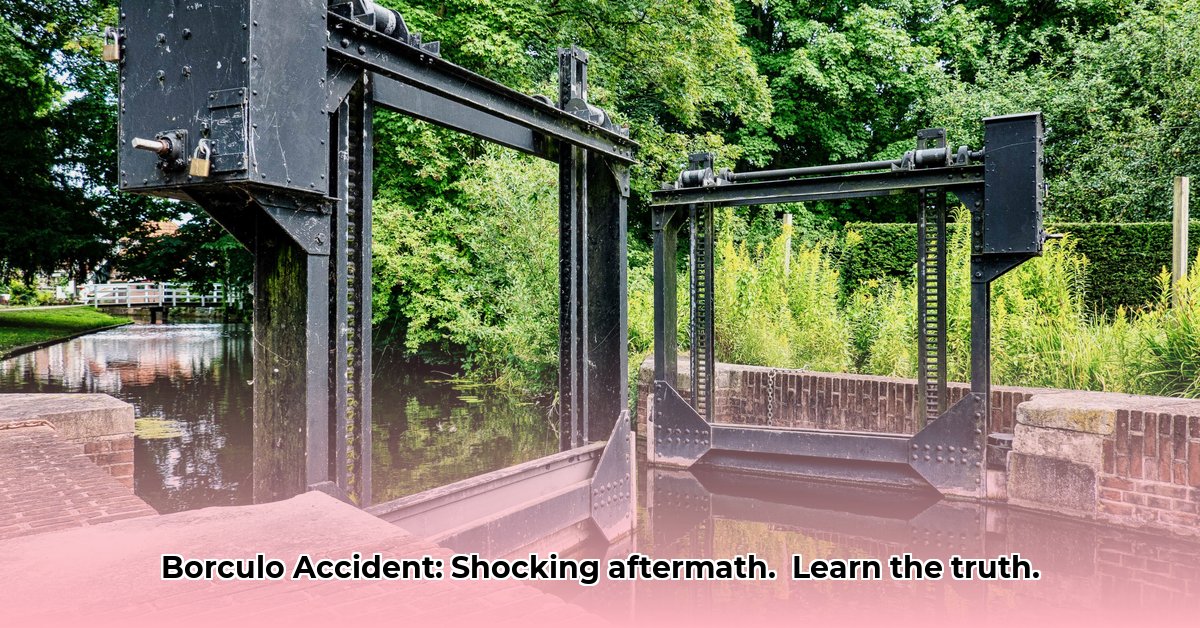
The Borculo Ongeval, the chemical spill at the FrieslandCampina factory, sent shockwaves through the community. A sudden, unsettling orange cloud prompted immediate concerns, triggering a rapid emergency response. While the immediate danger has passed, crucial questions remain unanswered, highlighting critical gaps in preparedness and prompting a call for significant improvements.
A Rapid Response, Yet Areas For Improvement
Emergency services reacted swiftly, showing the effectiveness of established protocols. The coordinated response from various agencies demonstrated a well-rehearsed system in action. However, initial uncertainty regarding the spilled substance hampered containment efforts and risk assessment, emphasizing the need for quicker chemical identification during such emergencies. This delay underscores a critical weakness: precise identification is paramount for effective crisis management. Did the rapid response fully leverage all available resources? Where were the inefficiencies?
Unanswered Questions and Ongoing Concerns
Several key questions remain unanswered. The precise chemical involved still needs confirmation, hindering the accurate assessment of long-term health and environmental impacts. The full extent of contamination remains unclear, emphasizing the need for comprehensive environmental monitoring and meticulous analysis. This uncertainty highlights the vital importance of advanced, immediate chemical identification technology in emergency response. How can we improve the speed and accuracy of chemical identification in future incidents?
Actionable Steps Towards a Safer Future
The Borculo Ongeval provides invaluable lessons that necessitate immediate action across multiple levels:
FrieslandCampina:
- Commission a thorough, independent investigation to pinpoint the root cause of the incident and implement robust safety improvements. (Target completion: 6 months)
- Invest in real-time hazard detection systems to provide immediate alerts. (Implementation timeline: 12 months)
- Develop and rigorously test comprehensive business continuity plans. (Completion: within 24 months)
Borculo Local Government:
- Conduct extensive environmental assessments to identify and quantify contamination levels. (Completion: 6 months from incident conclusion)
- Review and enhance emergency response protocols, focusing on inter-agency coordination. (Review period: immediately, implemented within 12 months)
- Implement community education programs on industrial safety and emergency procedures. (Programme start: within 3 months)
Dutch National Government:
- Review and modernise national hazard response protocols to improve efficiency and coordination. (Review period: immediately, implementation within 18 months)
- Invest in advanced hazard detection technologies deployable across various industries. (Budget allocation: upcoming fiscal year)
- Increase resource allocation and training for emergency services. (Training schedule: immediate implementation of ongoing training programmes)
Emergency Services:
- Conduct a post-incident analysis of response times and resource allocation to identify areas for improvement. (Analysis completion: within 3 months)
- Expand training programmes focused on a wider range of chemical incidents. (Training schedule: immediate implementation of new programmes)
Risk Assessment: Identifying and Mitigating Future Threats
The following table summarizes the key risks identified following the Borculo Ongeval:
| Hazard Category | Probability (Likelihood) | Severity (Impact) | Overall Risk Level | Mitigation Strategies |
|---|---|---|---|---|
| Chemical Release | Moderate | High | High | Improved safety measures, real-time monitoring, rapid response teams; rigorous employee training |
| Environmental Damage | Moderate | Moderate | Moderate | Thorough environmental impact assessments, improved spill containment, effective remediation strategies |
| Public Health Impact | Low | High | Moderate | Timely public alerts, clear shelter-in-place instructions, robust medical monitoring, open communication |
| Operational Disruption | High | Moderate | High | Robust business continuity plans, redundant systems; swift incident management; clear communication protocols |
The Borculo Ongeval serves as a potent reminder of the crucial need for proactive risk management, not just reactive crisis management. The lessons learned must translate into concrete improvements to ensure a safer future. Are similar facilities equipped to handle potential spills? This incident demands a national review of industrial safety standards.
Enhancing Real-Time Hazard Identification in Industrial Facilities
The Borculo Ongeval underscores the necessity for advanced, real-time hazard identification systems in industrial settings. The initial response was significantly hampered by a lack of immediate information on the nature of the hazard. This underpins the need for a multi-faceted approach:
- Advanced Sensor Networks: Real-time data monitoring across the facility (temperature, pressure, gas levels, etc.).
- AI-Driven Analytics: Using AI to detect anomalies and predict potential hazards.
- Predictive Modelling: Leveraging data to anticipate potential hazards.
- Improved Communication Protocols: Clear and efficient communication channels.
- Regular System Audits and Training: Continuous improvement and employee preparedness.
The Borculo Ongeval necessitates a fundamental shift towards a proactive, technology-driven approach to industrial safety. The proactive implementation of the recommended mitigation strategies, coupled with continuous improvement, will be crucial in preventing future similar incidents. This requires commitment from all stakeholders to build a safer, more resilient future.